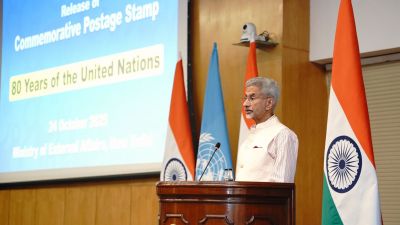
The Centre’s view and the states’ view are almost the same. Both want that the rate structure we decide should give revenue equivalent to what we are getting now. So it is only a matter of calculation which rate structure will bring about this revenue neutral position. As finance minister has mentioned at the press conference, it is also the objective of state and Central governments to bring down taxes on the people. This objective also has to be kept in mind while deciding the rate structure.
Story continues below this ad
Do you expect revival of private investment with GST rollout?
We do expect there will be greater interest from foreign investors to invest in India now, once the tax structure under GST is simplified. Also, the decision on location will now become tax neutral.
What will be the indicative chronology for GST to be rolled out by April 1, 2017? If not, are there any tentative block dates?
All the activities will take place simultaneously. We expect to keep a period of two months for discussions in GST Council to finalise model GST law and rate structure. The training, implementation of IT system, industry outreach etc, will be carried out simultaneously in the next 6-8 months.
Story continues below this ad
Doesn’t the GST Council have too much on its plate to meet the intended deadline of April 1, 2017?
GST Council will have to work overtime to take up all the issues one by one and resolve them within a period of two months to meet the deadline of March, 2017. If all the states come together it should be possible.
Will the SGST laws have the provision for levy of state taxes such as fat tax by Kerala? What will happen to cess and surcharges post GST rollout since the revenue collected from those comes only to central government coffers?
All taxes on sale of commodities are now merged into GST. The GST Council will decide which item to be placed in which slab. As per the Constitutional Amendment clause 12(4)(a), the GST Council shall make recommendation to the Union and the states on the cesses and surcharges levied by the Union, the states and local bodies which may be subsumed in the GST. Which all cesses will merge will depend upon the decision of the GST Council. If all cesses are merged in the GST, the requirements of revenue for Union government would have to be assessed higher, because the income coming from Union to GST instead of cess will now have to be devolved at the rate of 42 per cent to the states.
Story continues below this ad
How does the government propose to bridge the gap on threshold with the states seeking Rs 10 lakh threshold and the Centre asking for Rs 25 lakh?
For increasing the threshold limit of exemption from Rs 10 lakh to Rs 25 lakh, there was a discussion in the last meeting of Empowered Committee held in New Delhi. It was pointed out by the Chairman of Empowered Committee to the Members that as per the existing statistics of VAT and Service Tax, less than 2 per cent revenue comes from the dealers having turnover of less than Rs 25 lakh but the number of such dealers who are having turnover of less than Rs 25 lakh is 60 per cent of the total number of dealers. So a major portion of dealers can be given relief by increasing the threshold without losing much revenue. The states more or less agreed to this viewpoint. However, the final decision is yet to be taken.
On dual control, even if two notices would not be sent to the same trader, would both Centre and states have the power to scrutinise CGST and SGST filings by a trader or entity?
The decisions on these issues form part of our desire to avoid dual control. The issue of cross empowerment for the purpose of removing dual control will have to come up for discussion in the meeting of the GST Council. We will continue to make efforts with the states to arrive at a consensus on this.
Story continues below this ad
Empowered Committee Chairman and West Bengal FM Amit Mitra and Kerala FM Thomas Isaac have written to the finance minister asking for clarification on exclusion of “full” compensation from the Constitution Amendment Bill for GST and changes in clauses in it which disable revenue sharing with states for IGST revenue collection. What are your comments on it?
We will discuss with them on these issues.
How will the government ensure that benefits of lower GST is passed on to the consumers? Will there be a price monitoring mechanism?
A lot of consumer awareness will have to be created in order to ensure that the benefit of lower GST is passed on to consumers. There is no proposal to control prices statutorily.

 Hasmukh Adhia, Revenue Secretary
Hasmukh Adhia, Revenue Secretary






























